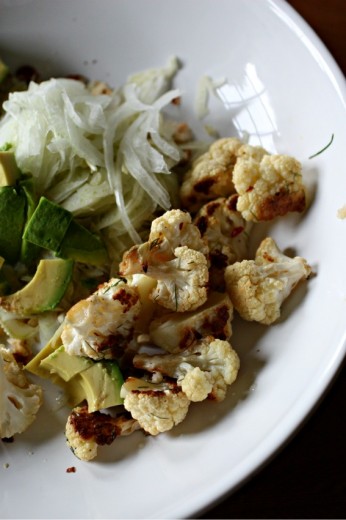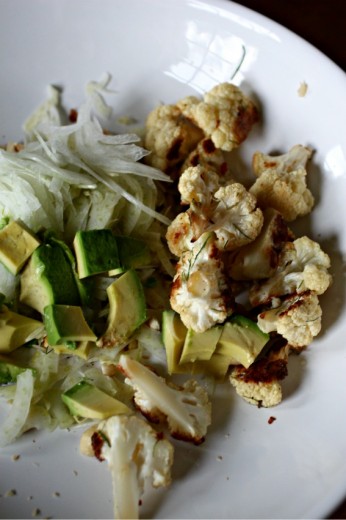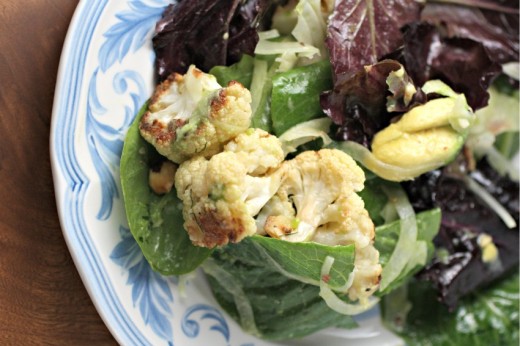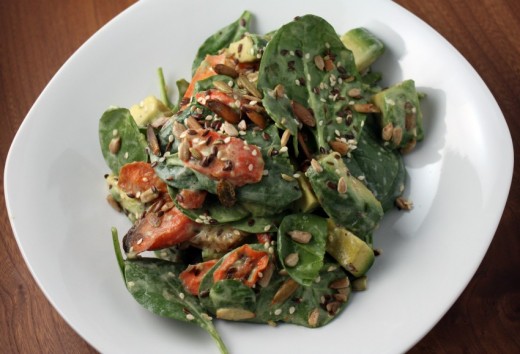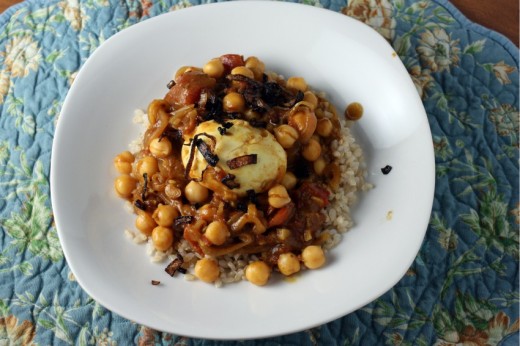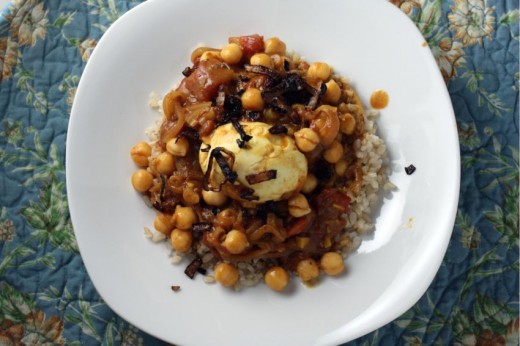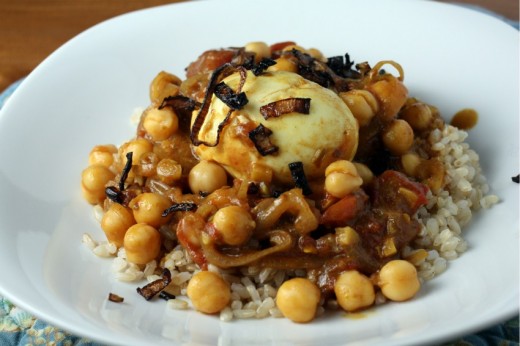I don’t know about you, but I feel like the first time I cook something is always the best. Not bake, cook. When I bake something more than once, it is almost always better the second or third time than it was the first. Baking can be tricky and I usually am able to fix any little glitches in a recipe or my technique after I have already made a dessert or a bread.
There have been so many times that I have repeated a recipe merely for the sake of this blog. I cook first and foremost so that I can eat and feed family and friends. Photographing and blogging about food is secondary. But often I am midway through a meal and I think to myself, “I really should write about this” or someone at the dinner table asks me, “Are you going to write about this?” So then I repeat the recipe the next week and I can say, almost without exception, that it was better the first time.
This was a lovely Italian stew the first time I made it. I was thinking about how good it tasted and my parents and brother were ooohing and aaahing and asking when it would be on the blog, so I stood up and snapped a photo with my phone. And then I realized that that photo would not do and I was going to have to make it again.
So I made it again. And I didn’t pay as careful attention to the recipe, I forgot the saffron, and I used dried beans because I didn’t have any more fresh shelling beans stashed away in my freezer and the stew that was so mind blowingly tasty – the kind of thing where you sit back and ask yourself how vegetables can taste so good and maybe there is something to that vegan thing after all – was just a good dinner.
Make it. Follow the recipe. Use fresh shelling beans if you can, this is their season and they can pretty easily be found at farmers’ markets. If you don’t have access to fresh, soak some dried beans overnight and cook them separately from the stew, then add them once they are cooked. As much as I love their convenience, this is not the place for canned beans.
One Year Ago: Double Chocolate Peanut Butter Pie, Corn Pudding
Two Years Ago: Green Bean Salad with Mustard Seeds and Tarragon,
Three Years Ago: Tortellini Skewers, Bocconcini (Marinated Mozzarella)
Country-Style Vegetable Stew (Cianfotta)
Adapted from Verdura, Vegetables Italian Style
Serves 4
Whenever I use saffron, I always allow it to “bloom” in liquid before adding it to the dish. It helps bring out the delicate flavor of the saffron. I served the stew, both times, with a brown rice tossed with ricotta and lots of herbs. It was nice but not necessary.
1 small pinch of saffron
Olive oil
1 onion, peeled and chopped
2 celery stalks, sliced crosswise
2 garlic cloves, minced
1 tbsp. thyme leaves
1 small eggplant, trimmed and cut into medium dice
1 large yellow pepper, seeded, membranes removed, cut into medium dice
4 medium peppers, a mix of colors if possible, cut into medium dice
4 ripe tomatoes, seeded, cut into chunks
1 pinch red pepper flakes
Kosher or sea salt and freshly ground black pepper
8 ounces cooked beans
2 tbsp. chopped fresh parsley
2 tbsp. chopped fresh basil
Pour a few tablespoons of hot water into a bowl. Add the saffron and set aside.
Place a wide shallow pan over medium heat. Drizzle in just enough olive oil to coat the bottom, then add the onion and celery and a large pinch of salt. Sauté until starting to soften, then add the garlic, saffron, and the thyme. Cook for another 2 minutes, then add the rest of the vegetables. Add another pinch of salt and a few grinds of pepper, stir well, and cover. Turn the heat down to low. Stir the mixture occasionally and if it seems too dry, add a few tablespoons of water. Repeat if necessary. Add the beans during the last 5 minutes of cooking. Stir in the herbs just before serving and season to taste with salt and pepper.
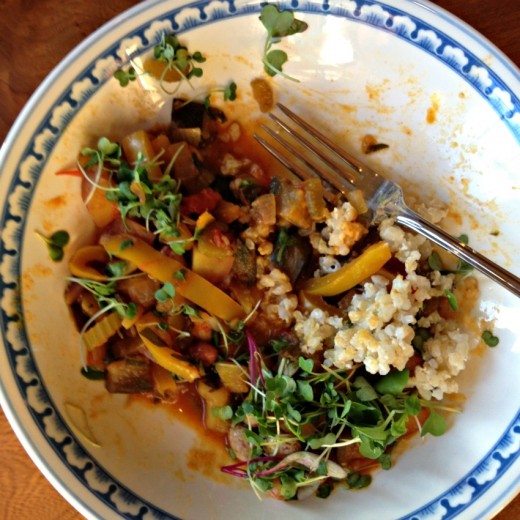
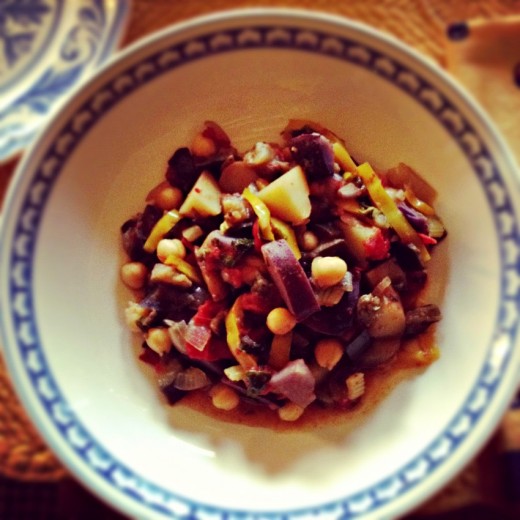


 Share
Share
